

— Blogs —
—Products—
 Consumer hotline +8618073152920
Consumer hotline +8618073152920 WhatsApp:+8615367865107
Address:Room 102, District D, Houhu Industrial Park, Yuelu District, Changsha City, Hunan Province, China
Product knowledge
Time:2024-11-10 16:19:00 Popularity:1476
There are several ways to test the moisture content of soil, each with its own characteristics and application scenarios. The following are a few common testing methods:
- Principle: By comparing the mass of the soil before and after drying, the weight of the water in the soil is derived.
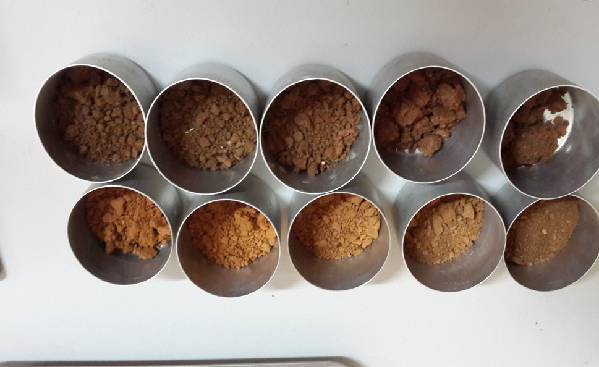
1. Take a representative sample of fresh soil from an earth auger in the field. Crush about 20 g of soil from the middle of the earth auger at the desired depth and quickly put it into a large aluminum box of known exact mass, cover it tightly, and put it into a wooden box or other container to bring it back indoors.
2. wipe the exterior of the aluminum box clean and weigh it immediately.
3. weigh the large aluminum box containing the fresh soil sample on a balance to the nearest 0.01 g. Remove the lid and place the box on the balance.
4. remove the lid, place it under the box, and bake in an oven that has been preheated to 105±2°C. 5. remove, cover, and bake.
5. Remove, cover and cool to room temperature in a desiccator and weigh again.
6. Calculate the soil moisture content, i.e. the ratio of the difference between the mass of the soil containing water and that of the soil not containing water to the mass of the dry soil.
- Advantages: simple equipment, inexpensive, accurate measurement.
- Disadvantages: large amount of work and disturbance of the soil sample, which significantly affects the accuracy when the water content is high.
- Principle: Determine the soil moisture content by measuring the chemical reaction between soil moisture and other substances, such as calcium carbide method, immersion method and concentrated sulfuric acid method.
- Advantages: Simple to operate and can be carried out on site.
- Disadvantages: It may cause pollution or damage to the soil, so it needs to be chosen carefully in practical application.
- Principle: Determine the electrical reaction characteristics in the soil to determine the soil water content. Resistance, capacitance, potential difference and polarization methods.
- Example: The resistance method involves burying two electrodes in the soil and then measuring the resistance between the two electrodes. In this case, the contact resistance between the electrodes and the soil is likely to be much greater than the resistance of the soil. Therefore, a resistive block is formed by embedding the electrodes in a porous water-permeable medium (gypsum, nylon, fiberglass, etc.) to solve this problem.
- Advantages: does not disturb the soil and enables continuous observation at a fixed location.
- Disadvantages: high cost of equipment.
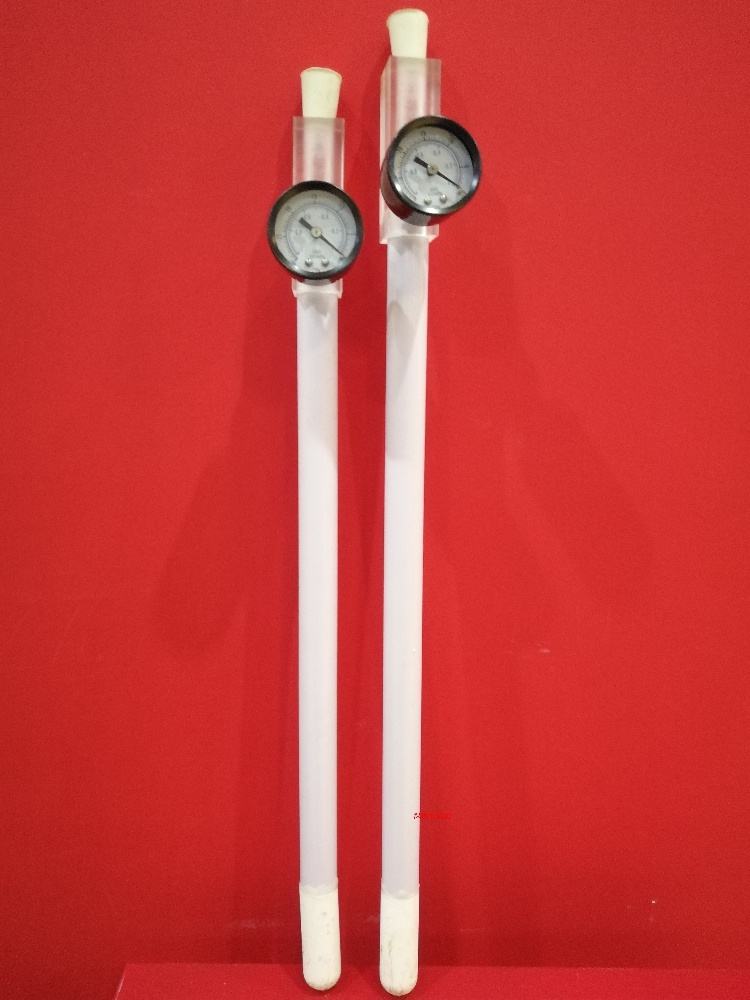
- Principle: Determination of negative pressure in the soil or adsorption of soil moisture subs to determine the soil moisture content. Example: When a clay head is inserted into the soil.
- Example: When the clay head inserted into the measured soil, the free water in the tube through the porous clay wall and soil water contact, after the exchange of water potential equilibrium. At this time, the value read from the tensiometer is the suction value of the soil water (at the clay head), that is, the value of the matrix potential after ignoring the gravitational potential. The water content of the soil can then be determined from the relationship between soil water content and matrix potential (soil water characteristic curve).
- Advantages: Suitable for specific studies or special soil conditions.
- Disadvantages: complicated and costly.
- Principle: Measurement of changes in the soil by gamma rays or neutron rays to determine the soil water content. Examples: γ-ray method and neutron method.
- Example: The basic principle of the γ-ray method is that when γ-rays emitted by radioactive isotopes (now commonly used are 137Cs and 241Am) penetrate the soil, their attenuation increases with the increase in the wet bulk weight of the soil.
- Advantages: high accuracy, suitable for monitoring large areas.
- Disadvantages: professional operation is required and its use is limited in view of radiation safety.
- Principle: Determination of soil water content by measuring the energy of emitted or reflected electromagnetic waves through remote sensing or other techniques.
- Application: Optical measurement is a non-contact method of measuring soil water content. The reflection, transmission and polarization of light are also related to soil water content. Through the measurement, the dielectric constant of the soil is firstly found out, so as to further deduce the soil water content.
- Advantages: Suitable for large scale monitoring, non-contact.
- Disadvantages: highly influenced by weather and terrain.
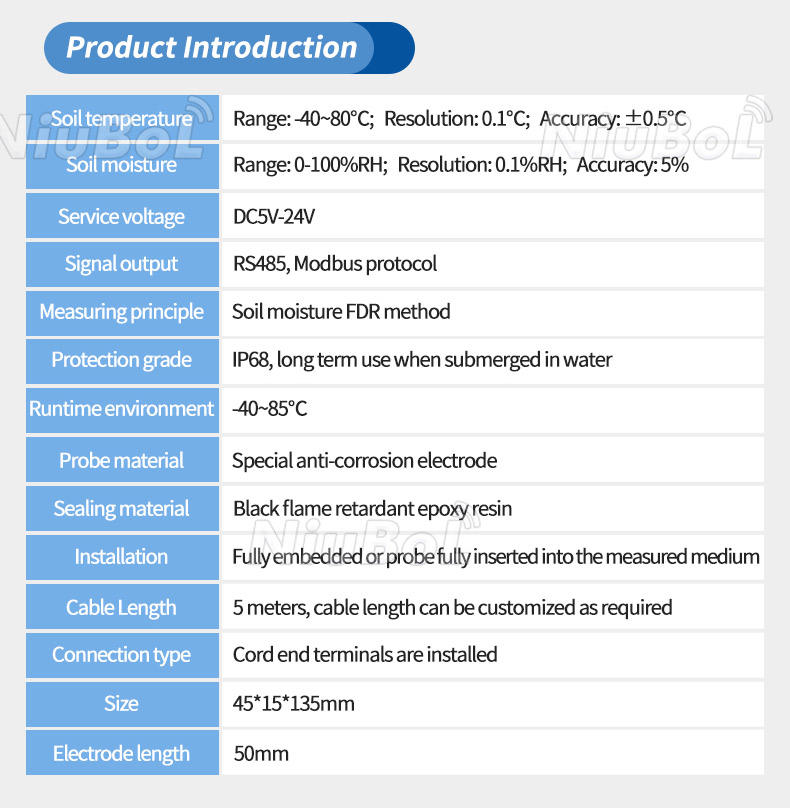
- Principle: By measuring the time difference T between the incidence and reflection of electromagnetic waves on a wire buried in the soil, the dielectric constant of the soil is determined, and the water content of the soil is then determined.
- Process: electromagnetic wave along the non-magnetic medium in the transmission line of the transmission speed V = c / ε, and for the known length of L transmission line, and V = L / t, so we can get ε = (ct / L) ², where c is the speed of light propagation in a vacuum, ε is the dielectric constant of the non-magnetic medium, t is the transmission time of the electromagnetic wave in the wire. And when the electromagnetic wave is transmitted to the end of the wire, a part of the electromagnetic wave is reflected back along the wire, so that a time difference T is formed between the incident and the reflection.
- Advantages: Provides continuous, fast measurements and is suitable for real-time monitoring.
- Disadvantages: Higher equipment cost.
- Principle: Similar to TDR, but uses frequency response for measurement, balancing cost and accuracy.
- Advantages: Relatively economical and easy to operate.
- Disadvantages: Accuracy may be slightly lower than TDR.
- Types: Various types including capacitive, microwave method, etc. Buried directly into the soil to monitor moisture content in real time.
- Application: Suitable for farmland automated irrigation system, able to respond quickly and reduce manual intervention.
- Advantages: Real-time monitoring, easy to operate.
- Disadvantages: Requires proper installation and regular calibration.
In addition to the above methods, there are some other methods that can be used to test soil water content, such as the specific gravity method, thermocouple method, and heat conduction method. These methods have their own characteristics and are suitable for different scenarios and conditions.
In practical application, suitable methods should be selected for testing according to specific needs and conditions. Meanwhile, in order to ensure the accuracy and reliability of the test results, the following points should also be noted:
1. select representative soil samples for testing.
2. maintain the accuracy and stability of the equipment during the testing process.
3. analyze and process the test results scientifically to avoid the influence of errors and disturbing factors.
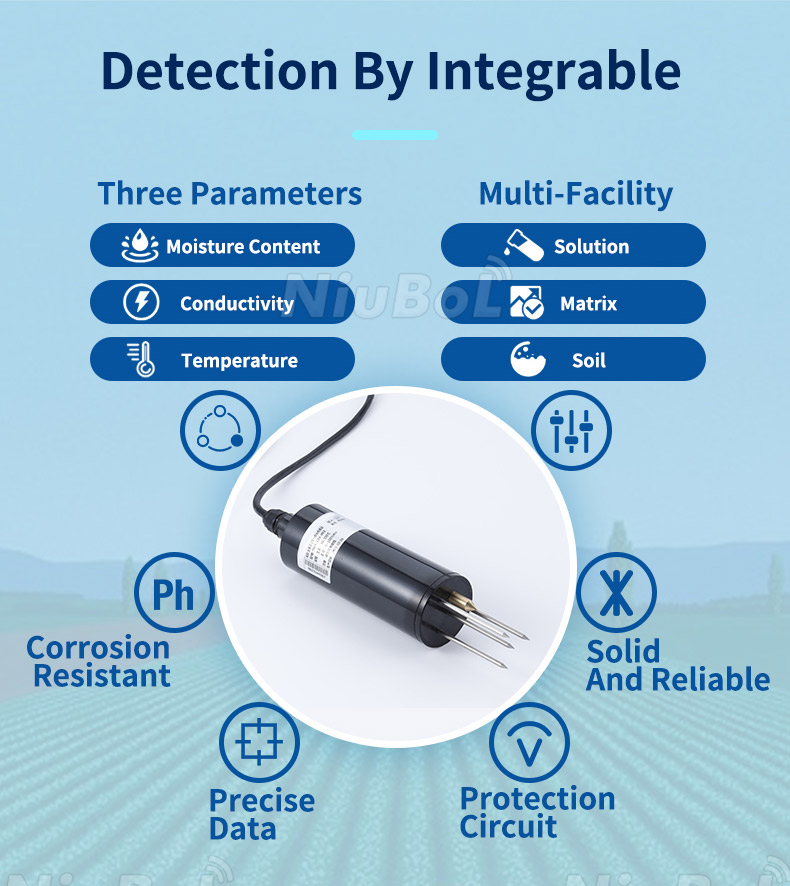
Soil moisture content has a vital impact on plants, specifically in the following aspects.
- Moisture is the basis for physiological activities such as photosynthesis, transpiration and nutrient transportation in plants.
- Moderate soil moisture can promote the growth and development of plants, so that plants maintain a normal physiological state.
- When the soil moisture content is too high, the plant root system may be damaged due to lack of oxygen, resulting in poor root development, which in turn affects plant growth.
- When the soil water content is too low, plants may suffer from slow growth, dry and wilted leaves due to lack of water, which may even lead to plant death in serious cases.
- Photosynthesis is the main way for plants to obtain energy, and water is an important participant in photosynthesis.
- Changes in soil water content will affect the water potential and stomatal resistance of plant leaves, which in turn affects the absorption of CO2 and photosynthesis in leaves.
- When soil water content is moderate, plant leaves remain erect and stomata are open, favoring CO2 entry and photosynthesis.
- When the soil water content is too high or too low, the leaf water potential decreases, stomatal resistance increases, CO2 diffusion is blocked, resulting in a decrease in photosynthetic rate.
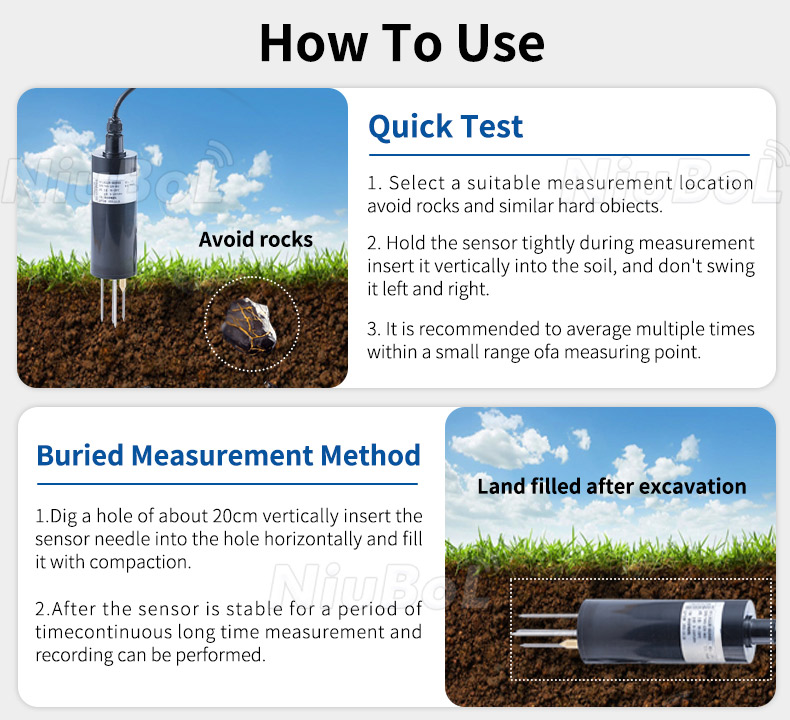
- Transpiration is one of the main ways of water dissipation in plants, and is also an important means for plants to regulate body temperature and maintain water balance in the body.
- Changes in soil moisture content affect the rate of plant transpiration.
- When the soil moisture content is moderate, plant transpiration proceeds normally, which helps the heat dissipation and nutrient transportation in the plant.
- When the soil water content is too low, plant transpiration is weakened, which may lead to high temperatures in the plant and impeded nutrient transportation.
- Nutrients in the soil are usually present in the dissolved state and plants absorb these nutrients through the root system.
- Changes in soil moisture content affect the solubility and diffusion rate of nutrients, which in turn affects nutrient uptake by plants.
- When soil moisture content is moderate, nutrient solubility is moderate and diffusion rate is fast, which is favorable for plant nutrient uptake.
- When the soil water content is too high or too low, the solubility of nutrients may be reduced or the diffusion rate may be slowed down, leading to the obstruction of nutrient absorption by plants.
- Moderate soil moisture improves plant resilience, enabling plants to better cope with unfavorable environments such as drought and high temperatures.
- When the soil moisture content is moderate, the water balance in the plant is maintained, which is conducive to the normal physiological activities of the plant.
- When the soil water content is too low, plants may reduce their resilience due to lack of water, and are more vulnerable to environmental stress.
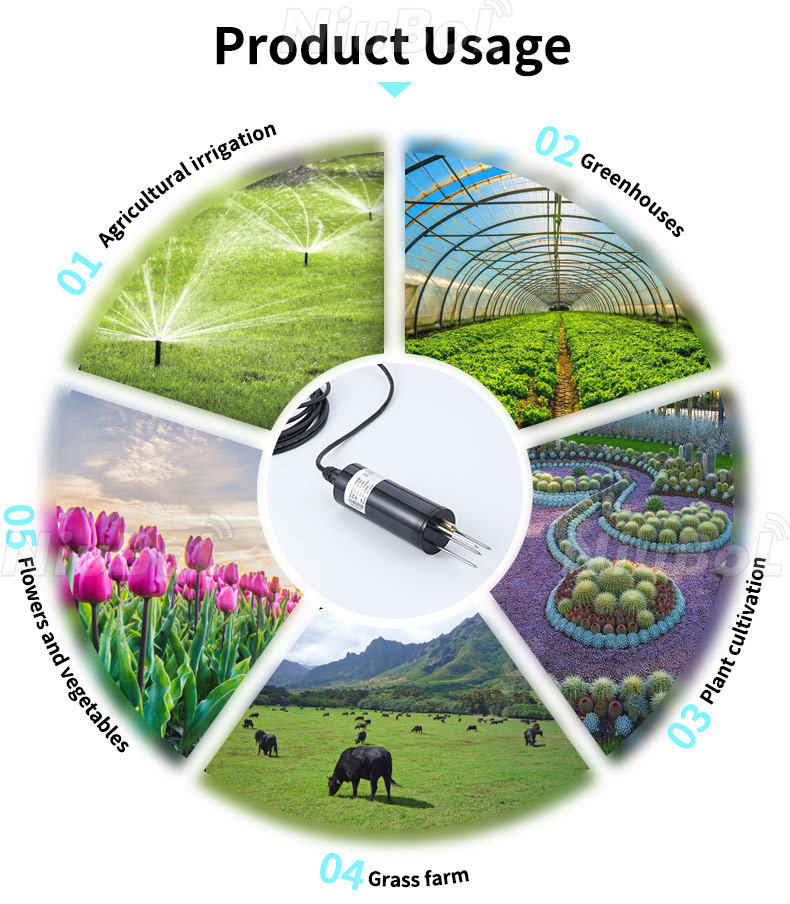
In summary, soil water content has an important impact on plant growth and development, photosynthesis, transpiration, nutrient absorption and stress tolerance. Therefore, in agricultural production, irrigation should be rationally irrigated according to the growth demand of plants and soil conditions in order to maintain appropriate soil water content and provide good environmental conditions for plant growth.
1.NBL-S-THR Soil Temperature Moisture Sensor datasheet
NBL-S-THR-Soil-temperature-and-moisture-sensors-Instruction-Manual-V4.0.pdf
2. NBL-S-TMC Soil Temperature Moisture EC Sensor datasheet
NBL-S-TMC-Soil-temperature-and-moisture-conductivity-sensor.pdf
3. NBL-S-TM Soil Temperature Moisture Sensor datasheet
NBL-S-TM-Soil-temperature-and-moisture-sensor-Instruction-Manual-4.0.pdf
4. NBL-S-TMCS Soil Temperature, Moisture, Conductivity and Salinity Integrated Sensor
NBL-S-TMCS-Soil-Temperature-Humidity-Conductivity-and-Salinity-Sensor.pdf
Related recommendations
Sensors & Weather Stations Catalog
Agriculture Sensors and Weather Stations Catalog-NiuBoL.pdf
Weather Stations Catalog-NiuBoL.pdf
Related products
 Combined air temperature and relative humidity sensor
Combined air temperature and relative humidity sensor Soil Moisture Temperature sensor for irrigation
Soil Moisture Temperature sensor for irrigation Soil pH sensor RS485 soil Testing instrument soil ph meter for agriculture
Soil pH sensor RS485 soil Testing instrument soil ph meter for agriculture Wind Speed sensor Output Modbus/RS485/Analog/0-5V/4-20mA
Wind Speed sensor Output Modbus/RS485/Analog/0-5V/4-20mA Tipping bucket rain gauge for weather monitoring auto rainfall sensor RS485/Outdoor/stainless steel
Tipping bucket rain gauge for weather monitoring auto rainfall sensor RS485/Outdoor/stainless steel Pyranometer Solar Radiation Sensor 4-20mA/RS485
Pyranometer Solar Radiation Sensor 4-20mA/RS485
Screenshot, WhatsApp to identify the QR code
WhatsApp number:+8615367865107
(Click on WhatsApp to copy and add friends)
